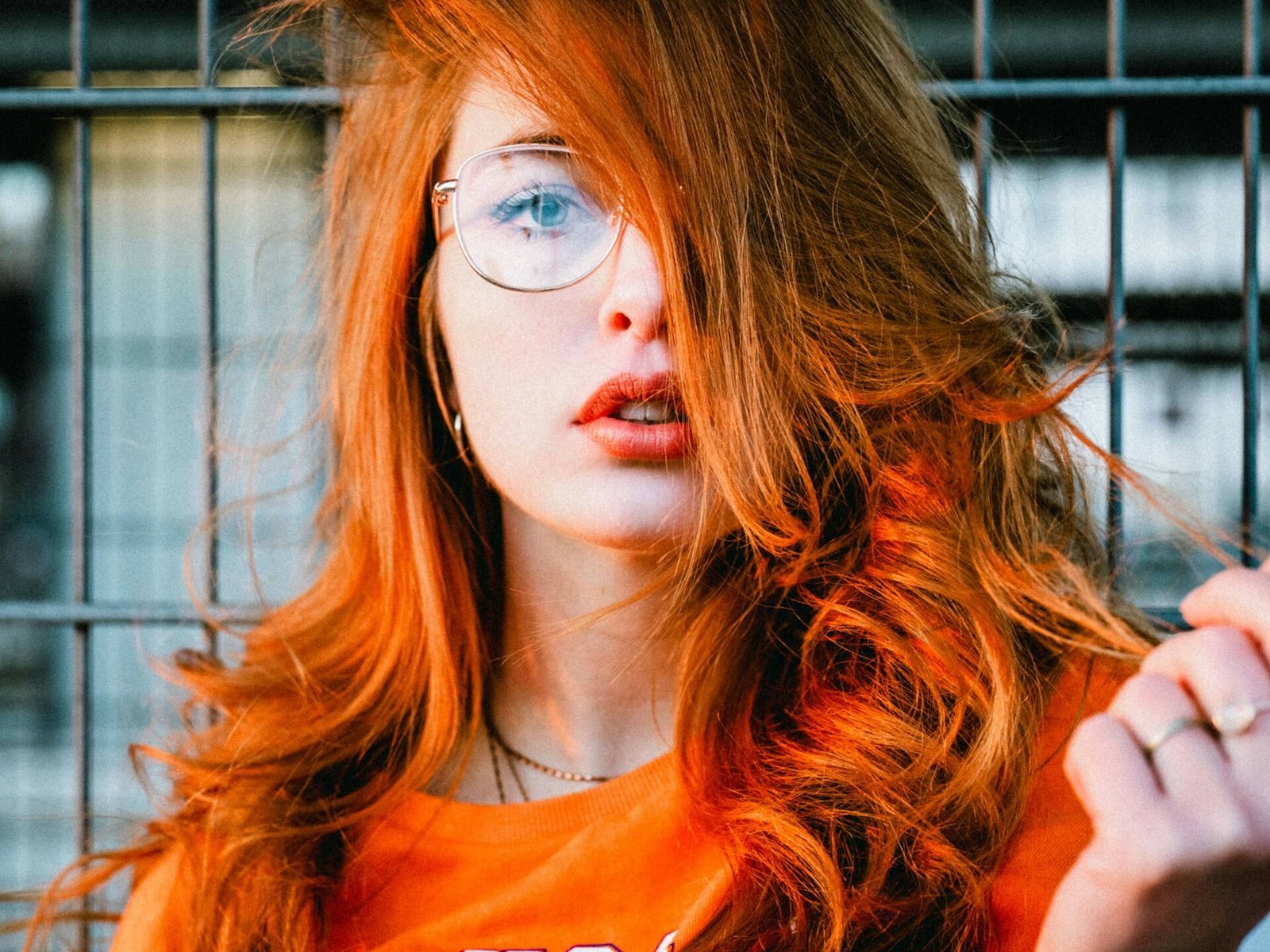The Scientific Shift Toward Natural Colour Protection
For decades, traditional hair colour protection relied heavily on silicones, quaternary ammonium compounds, and synthetic polymers. While effective at creating a protective film over the hair shaft, these ingredients came with significant drawbacks:
- They often built up on hair over time, requiring harsh clarifying treatments
- Many weren’t biodegradable, creating environmental concerns
- Some caused scalp irritation in sensitive individuals
- Several interfered with colour molecules during the colouring process
Modern cosmetic science has identified that certain plant compounds can provide equal—and sometimes superior—colour protection while avoiding these drawbacks.
“What’s most exciting about the natural colour protection revolution is that we’re not just replacing synthetic ingredients with natural alternatives—we’re discovering completely new protection mechanisms that work in harmony with the hair’s biology,” explains cosmetic chemist Dr. Helena Richards.
Recent research from the International Journal of Cosmetic Science has shown that natural formulations using specific plant actives can reduce colour fade by up to 27% compared to conventional products, particularly for red and violet hair colours that typically fade most rapidly.
6 Plant-Based Ingredients Proven to Protect Colour
1. Aloe Vera Leaf Juice
The Science: Far beyond its soothing reputation, aloe vera contains polysaccharides that create a lightweight, breathable film over the hair shaft.
Research Evidence: A 2022 study in the Journal of Cosmetic Dermatology found that shampoos using aloe juice as their primary base (rather than water) demonstrated 18% better colour retention over 14 washes compared to water-based formulas.
How It Works: The polysaccharides in aloe form a protective barrier that reduces the leaching of colour molecules during washing while simultaneously providing UV protection. Additionally, aloe’s natural pH helps keep the cuticle sealed.
Find It In: Colour Saviour Shampoo uses aloe vera juice as its first ingredient rather than water, maximizing this protective benefit.
2. Hydrolyzed Wheat Protein
The Science: This plant-derived protein closely resembles the hair’s own keratin structure.
Research Evidence: Research published in the International Journal of Trichology demonstrated that wheat protein penetrates damaged areas of the cuticle, reducing porosity issues that lead to rapid colour fade. In controlled studies, wheat protein treatments extended colour life by 2-3 weeks compared to untreated hair.
How It Works: Wheat protein temporarily “patches” gaps in the cuticle where colour molecules typically escape. It also improves hair elasticity, reducing the cuticle lifting that occurs during styling.
Find It In: Colour Saviour Shampoo contains hydrolyzed wheat protein that works to smooth the cuticle and prevent colour leakage.
3. Betaine (From Sugar Beets)
The Science: This osmoprotectant compound derived from sugar beets functions as both a gentle cleanser and moisture regulator.
Research Evidence: Research in the Journal of Surfactants and Detergents found that betaine-based cleansing systems caused substantially less colour fade than conventional surfactants while maintaining effective cleansing power.
How It Works: Betaine cleanses without stripping, maintaining the hair’s moisture balance that’s critical for colour vibrancy. It also helps neutralize the negative charges on damaged hair that can repel conditioning ingredients.
Find It In: Colour Saviour Shampoo utilizes betaine as a primary surfactant for gentle, colour-safe cleansing.
4. Sea Kelp Extract (Laminaria Digitata)
The Science: Rich in vitamins, minerals, and alginate compounds, sea kelp offers multifaceted colour protection.
Research Evidence: A study in the Journal of Cosmetic Science found that hair treated with sea kelp extract showed 22% less UV-induced colour degradation, with particularly strong protection for red dyes.
How It Works: The alginate compounds form a protective film around the hair shaft while the high mineral content strengthens the cuticle structure. Additionally, sea kelp has natural UV-filtering properties that prevent photo-degradation of colour molecules.
How To Use It: Look for sea kelp extract in leave-in treatments and conditioners for maximum benefit.
5. Green Tea Extract (Camellia Sinensis)
The Science: Rich in polyphenols and catechins, green tea is a powerful antioxidant for hair colour protection.
Research Evidence: Research published in the Journal of Photochemistry and Photobiology demonstrated that hair treated with green tea extract showed significant resistance to both UV damage and oxidative stress—two major causes of colour fading.
How It Works: The polyphenols in green tea neutralize free radicals that break down artificial colour molecules. They also create a light protective coating that helps prevent water from penetrating the cuticle during washing.
How To Use It: While beneficial in shampoos, green tea extract shows maximum efficacy in leave-in treatments and color-protecting sprays.
6. Sunflower Seed Extract (Helianthus Annuus)
The Science: Rich in antioxidants and fatty acids, sunflower seed extract provides natural UV protection.
Research Evidence: A comparative study in the International Journal of Cosmetic Science found that hair treated with sunflower extract retained 17% more colour after 20 hours of UV exposure compared to untreated hair.
How It Works: The linoleic acid in sunflower seed extract helps seal the cuticle, while its natural UV-filtering properties shield colour molecules from sun damage. It also helps maintain the hair’s moisture balance that’s essential for colour vibrancy.
How To Use It: Most effective in leave-in treatments and UV-protective styling products.
Synthetic vs. Natural: Understanding the Colour Protection Difference
The protection mechanisms of natural vs. synthetic ingredients differ significantly:
Synthetic Protection Approach
Most synthetic colour protection works through:
- Creating an impermeable film over the hair (silicones)
- Electrostatically bonding to damaged sites (quaternary compounds)
- Forming a rigid lattice structure around the hair (synthetic polymers)
The Drawback: While effective initially, these approaches can lead to buildup, dullness, and eventually require clarifying treatments that strip colour.
Natural Protection Approach
Natural colour protection typically works through:
- Adaptive, breathable films that allow moisture balance (plant polysaccharides)
- Cuticle reinforcement that mimics hair’s natural structure (plant proteins)
- Antioxidant activity that prevents colour molecule breakdown (botanical extracts)
- UV filtering to prevent photo-degradation (plant compounds)
The Advantage: This multi-faceted approach adapts to the hair’s needs without buildup, potentially offering more sustainable long-term colour protection.
“The difference is similar to waterproofing a wooden deck with plastic sheeting versus a breathable natural oil,” explains Master Colourist David Williams. “One creates an artificial barrier that eventually degrades, while the other enhances the material’s natural protective qualities.”
How to Identify Truly Natural Colour-Protecting Products
The “natural” label is surprisingly unregulated in hair care. Here’s how to identify genuinely effective natural colour protection:
1. Scrutinize the Ingredient List
Look For:
- Recognizable plant ingredients in the first 5 ingredients
- Specific plant extracts rather than vague terms
- Ingredients like “hydrolyzed wheat protein” rather than just “wheat”
Red Flags:
- “Fragrance” or “parfum” without clarification (may contain synthetic compounds)
- Ingredients ending in “-cone” or “-xane” (silicones)
- PEG compounds high on the ingredient list
Colour Saviour Shampoo demonstrates transparent natural formulation with clearly identified plant-derived ingredients heading its list.
2. Understand Natural vs. Naturally-Derived
There’s an important distinction between:
- Truly natural ingredients: Minimally processed plant extracts and oils
- Naturally-derived ingredients: Natural components that undergo significant processing
Both have legitimate roles in effective formulas. What matters most is transparency about their origin and processing.
3. Look for Meaningful Certifications
Not all natural certifications are equally stringent:
- COSMOS Organic/Natural: One of the strictest standards for natural cosmetics
- NATRUE: Comprehensive European natural certification
- EWG Verified: Focuses on ingredient safety rather than solely natural status
Beware of logos that mimic certifications but are actually just marketing symbols created by the brand itself.
4. Evaluate Formula Synergy
The most effective natural colour protection comes from synergistic formulas where:
- A gentle cleaning system prevents unnecessary colour loss
- Natural films provide physical protection
- Antioxidants prevent colour degradation
- pH optimizers keep the cuticle properly sealed
Colour Saviour Shampoo exemplifies this approach by combining betaine (gentle cleanser), aloe vera (protective film), wheat protein (cuticle repair), and lactic acid (pH optimizer) in one synergistic formula.
Frequently Asked Questions
Do natural colour protection ingredients work for all hair colours?
Different plant compounds show varying effectiveness for specific hair colours. For example, green tea extract and rosemary oil show particular effectiveness for darker colours, while chamomile and lemon provide benefits for blondes. For universal protection, look for products containing aloe juice, wheat protein, and antioxidant blends—like Colour Saviour Shampoo—that protect all colour types.
Can natural ingredients prevent colour fade from hard water?
Yes, but through different mechanisms than synthetic chelating agents. Plant-derived ingredients like phytic acid (from rice or corn) and certain citrus extracts can bind to minerals in hard water, preventing them from attaching to hair and causing colour fade. For severe hard water issues, alternating with a specialized chelating treatment may still be necessary.
How can I tell if “natural” products are just greenwashed?
Look beyond front-label claims and evaluate:
- Ingredient transparency (full disclosure of ingredient sources)
- Meaningful certifications rather than self-created logos
- Specific claims backed by explanation rather than vague “natural goodness” statements
- Realistic expectations (instant, dramatic results often indicate synthetic boosters)
Are DIY natural colour treatments as effective as commercial products?
DIY treatments can provide excellent supplementary benefits but typically lack the stability, precise formulation, and synergistic action of well-formulated commercial products like Colour Saviour Shampoo. For best results, use commercial products for your foundation routine and DIY treatments for occasional boosting.
How important is pH for natural colour protection?
Extremely important. Hair colour is most stable in a slightly acidic environment (pH 4.5-5.5). Quality natural products maintain this optimal pH range through ingredients like lactic acid, citric acid, or apple cider vinegar rather than synthetic pH adjusters. Colour Saviour Shampoo is specifically formulated to maintain this colour-protecting pH balance.
The natural revolution in hair colour care is not just about avoiding synthetic ingredients—it’s about harnessing the remarkable protective properties that plants have evolved over millions of years. By understanding which natural ingredients genuinely protect colour and how they work, you can make informed choices that keep your colour vibrant while aligning with your values.
What natural ingredients have you found most effective for your coloured hair? Share your experiences in the comments below!
Related Articles
June 29, 2025
The Complete Guide to Post-Workout Hair Washing
Why Most People Are Washing Their Hair Wrong? You've invested time in…
June 7, 2025
How to Tell If You Have a Sensitive Scalp: 7 Warning Signs You Shouldn’t Ignore
Does your scalp feel uncomfortable after washing your hair? Do certain products…
May 17, 2025
Why Your Water Quality Might Be Sabotaging Your Hair Shine (And What to Do About It)
Is your shower secretly stealing your hair's shine? The water flowing through…



